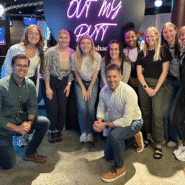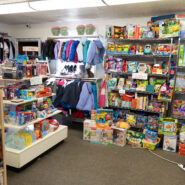Creating a New Merchandising system
My internship this semester has been with The Shades Co. The Shades Co. is a luxury sunglass specialty company with locations in seasonal areas, mainly across the Jersey Shore. On top of the administrative duties I am responsible for, I am also spearheading the development of a new merchandising system for the store. With this merchandising system , all stores will be laid out in the same way, allowing ease for employees who need to switch locations for a shift along with the customers who can easily find any frame at any given time in any of the locations. Another part of this is an auto reorder system. As most frames do not resell more than 4 times a day, the plan is to have at least 4 frames in stock at all times of the top models all season long. A trigger system will automatically reorder the frame and have it ready to be shipped to the store in about a day. This way, the display will always stay filled and able to be restocked with ease. Each frame in every store will be in the exact same (labeled) spot on the display. Doing this will not only make it easier for the employees to restock, but if there is a hole in the display, it is a good trigger to prove theft and check the cameras. This system also lays out a template for future stores to be planned. This model simplifies the process. All the company now has to do is find the storefront and buy the space. After that, the design team will be able to give the stores all the same layout within the display which allows for quicker expansion. This system will change the way people buy sunglasses. Since sunglasses are more of a “try it on” type of product, the majority of sunglass shopping is still done in store. This project I have taken on has been quite the tedious endeavor. I had to begin by going through every sunglass we sold in the reports, creating a large excel document with the item number, how many we sold, at what margin, give it a sell through grade, and rank it by what sold most. Not to forget, the lens color, size, polarization, and if it folds or not. This had to be done for 420 different ray ban models alone, along with all of the other brands the store sells. This process was not the most enjoyable assignment I have ever done, however I have gained a lot of knowledge and understanding on how exactly the buying process works, and can benefit a business financially.
Example:
| ITEM | SOLD 6/1-8/31 | MARGIN | Sell Through Grade | Rank | Lens Color | Frame Color | Size | Polarized | Folding | Suggested Retail Price | model code | UPC |
| RB 4171 710/T5 54 | 140 | 40% | A | 1 | POLAR BROWN GRADIENT | HAVANA | 54 | Y | N | $ 163.00 | 0RB4171 | 8053672495744 |
| RB 4171 865/13 54 | 68 | 42% | A | 2 | BROWN GRADIENT | RUBBER HAVANA | 54 | N | N | $ 143.00 | 0RB4171 | 805289742470 |







As someone who works in retail, this system is much needed. Our allocators are constantly sending our store too much or not enough of specific merchandise. Therefore, we are either sitting on a bunch of merchandise that is not selling and that will eventually get marked down and job out, which means that we are losing out on that profit, OR we have customers looking for an item that we do not have that we have potential to make money off of. Not only that, but as a high volume store, we only have so much space on the sales floor and they do not always keep in mind the amount of merchandise that we can actually fit on the sales floor and what ends up in our back-of-house. Very innovative. Our allocators could definitely use this system.